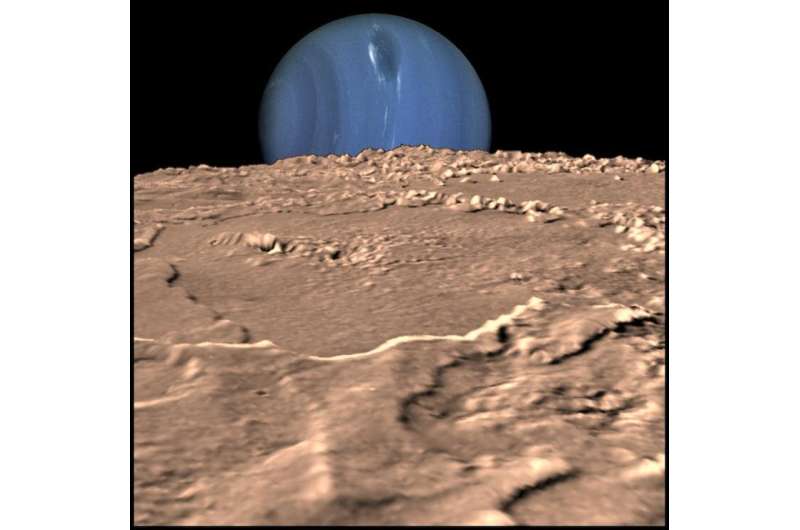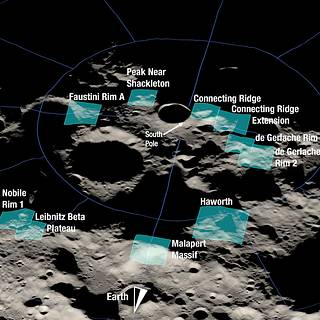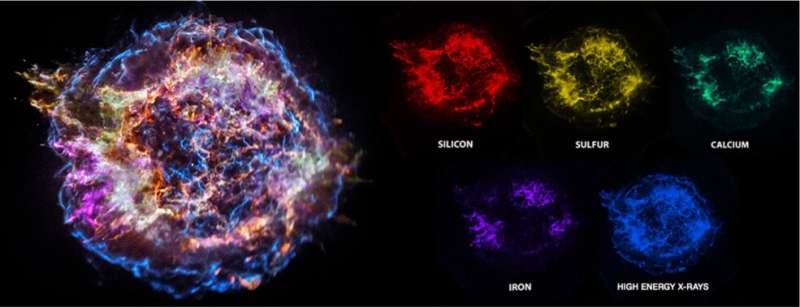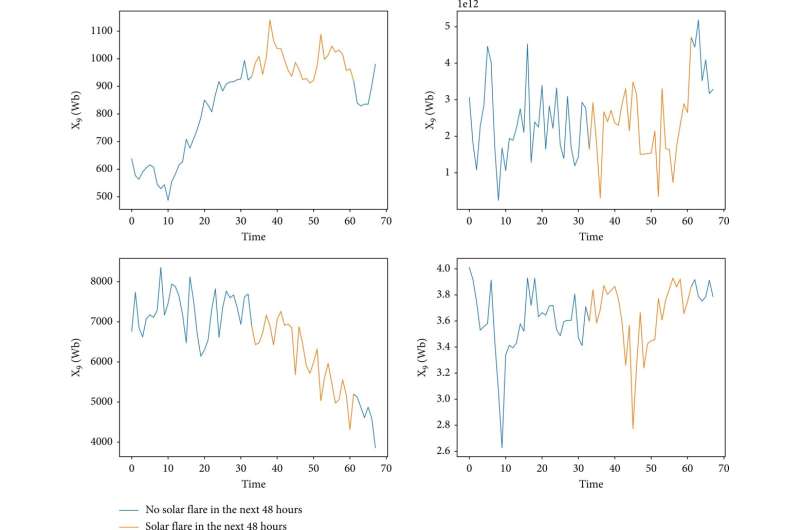
Copernical Team
After 45 years, the 5-billion-year legacy of the Voyager 2 interstellar probe is just beginning

On August 20 1977, 45 years ago, an extraordinary spacecraft left this planet on a journey like no other. Voyager 2 was going to show us, for the first time, what the outer solar system planets looked like close-up. It was like sending a fly to New York City and asking it to report back.
Voyager 1 was launched after Voyager 2, on September 5. Attached to the flank of each Voyager was a Golden Record carrying greetings, sounds, images and music from Earth.
The spacecraft were more or less twins, but they had different trajectories and scientific instruments. While both flew by Jupiter and Saturn, Voyager 1 then sped onwards to interstellar space. Voyager 2 tarried to make the only visit ever to the ice giants, Uranus and Neptune.
NASA Identifies Candidate Regions for Landing Next Americans on Moon
 As NASA prepares to send astronauts back to the Moon under Artemis, the agency has identified 13 candidate landing regions near the lunar South Pole.
As NASA prepares to send astronauts back to the Moon under Artemis, the agency has identified 13 candidate landing regions near the lunar South Pole. NASA rocket using 'astronomical forensics' will study exploded star

A NASA-funded sounding rocket mission will observe the remnants of an exploded star, uncovering new details about the eruption event while testing X-ray detector technologies for future missions.
How a scientist established a two-stage solar flare early warning system

How Martian ionospheric dispersion effected on SAR imaging
 The subsurface of Mars records important historical information on the formation and evolution of Mars. As an ionized medium, the Martian ionosphere plays a special role in radio wave propagation and is directly related to the local communication on Mars and the communication between Mars and Earth.
Therefore, the information on the subsurface and the Martian ionosphere provides a scientif
The subsurface of Mars records important historical information on the formation and evolution of Mars. As an ionized medium, the Martian ionosphere plays a special role in radio wave propagation and is directly related to the local communication on Mars and the communication between Mars and Earth.
Therefore, the information on the subsurface and the Martian ionosphere provides a scientif Track NASA's Artemis I mission in real time
 Join NASA's Orion spacecraft on its first mission around the Moon using the Artemis Real-time Orbit Website (AROW) to track the spacecraft's flight as it happens.
During Artemis I, Orion will travel to 40,000 miles beyond the Moon in the first integrated flight test with the Space Launch System (SLS) rocket. Using AROW, almost anyone with internet access can pinpoint where Orion is and tra
Join NASA's Orion spacecraft on its first mission around the Moon using the Artemis Real-time Orbit Website (AROW) to track the spacecraft's flight as it happens.
During Artemis I, Orion will travel to 40,000 miles beyond the Moon in the first integrated flight test with the Space Launch System (SLS) rocket. Using AROW, almost anyone with internet access can pinpoint where Orion is and tra The Lacuna Space water monitoring system
 Semtech Corporation (Nasdaq: SMTC), a leading global supplier of high performance analog and mixed-signal semiconductors and advanced algorithms, announced a collaboration with New Zealand's IoT Ventures and global connectivity provider Lacuna Space.
IoT Ventures has used Semtech's LoRa devices to develop its Drought Early Warning System, a network of low-cost rainwater tank and rain monit
Semtech Corporation (Nasdaq: SMTC), a leading global supplier of high performance analog and mixed-signal semiconductors and advanced algorithms, announced a collaboration with New Zealand's IoT Ventures and global connectivity provider Lacuna Space.
IoT Ventures has used Semtech's LoRa devices to develop its Drought Early Warning System, a network of low-cost rainwater tank and rain monit Launch Schedule for 3rd StriX-1 SAR satellite
 Synspective Inc., a SAR satellite data and analytic solutions provider, reports that the official launch schedule of StriX-1, the company's third SAR satellite.
StriX-1 has a launch window starting from mid-September (UTC). Exact lift-off target date and time will be confirmed soon.
Please note that the launch may be postponed or canceled due to unforeseen weather conditions or compl
Synspective Inc., a SAR satellite data and analytic solutions provider, reports that the official launch schedule of StriX-1, the company's third SAR satellite.
StriX-1 has a launch window starting from mid-September (UTC). Exact lift-off target date and time will be confirmed soon.
Please note that the launch may be postponed or canceled due to unforeseen weather conditions or compl MariaDB reimagines how databases deliver geospatial capabilities with acquisition
 MariaDB Corporation has announced it has acquired CubeWerx, leaders in geospatial solutions, for an undisclosed amount. With the acquisition, MariaDB adds cloud-native, scalable geospatial capabilities that the company plans to offer through its fully managed cloud service MariaDB SkySQL. Applications that leverage geospatial data are truly transformative, enabling businesses to offer new produc
MariaDB Corporation has announced it has acquired CubeWerx, leaders in geospatial solutions, for an undisclosed amount. With the acquisition, MariaDB adds cloud-native, scalable geospatial capabilities that the company plans to offer through its fully managed cloud service MariaDB SkySQL. Applications that leverage geospatial data are truly transformative, enabling businesses to offer new produc 'Cannibal' solar burst headed for Earth could make northern lights visible in U.S.
 A plume of "dark plasma" from the sun is expected to be overtaken by a "cannibal" solar burst that may cause an aurora display visible throughout large portions of the United States on Thursday.
The first "dark plasma explosion" was first seen on Sunday after erupting from a sunspot on the sun's surface at a speed of 1.3 million mph, tearing through the sun's atmosphere and creating a c
A plume of "dark plasma" from the sun is expected to be overtaken by a "cannibal" solar burst that may cause an aurora display visible throughout large portions of the United States on Thursday.
The first "dark plasma explosion" was first seen on Sunday after erupting from a sunspot on the sun's surface at a speed of 1.3 million mph, tearing through the sun's atmosphere and creating a c 
